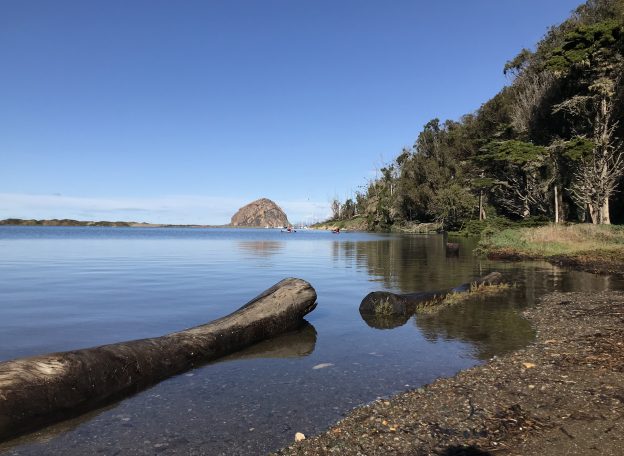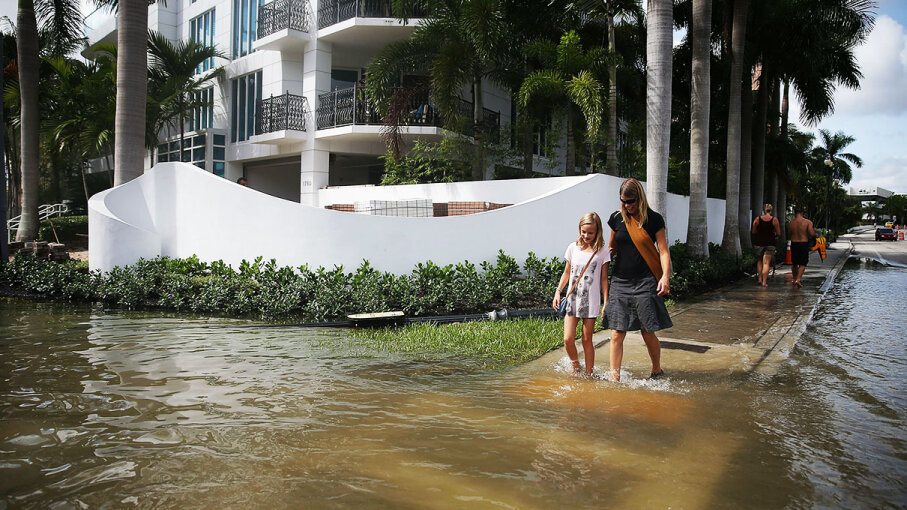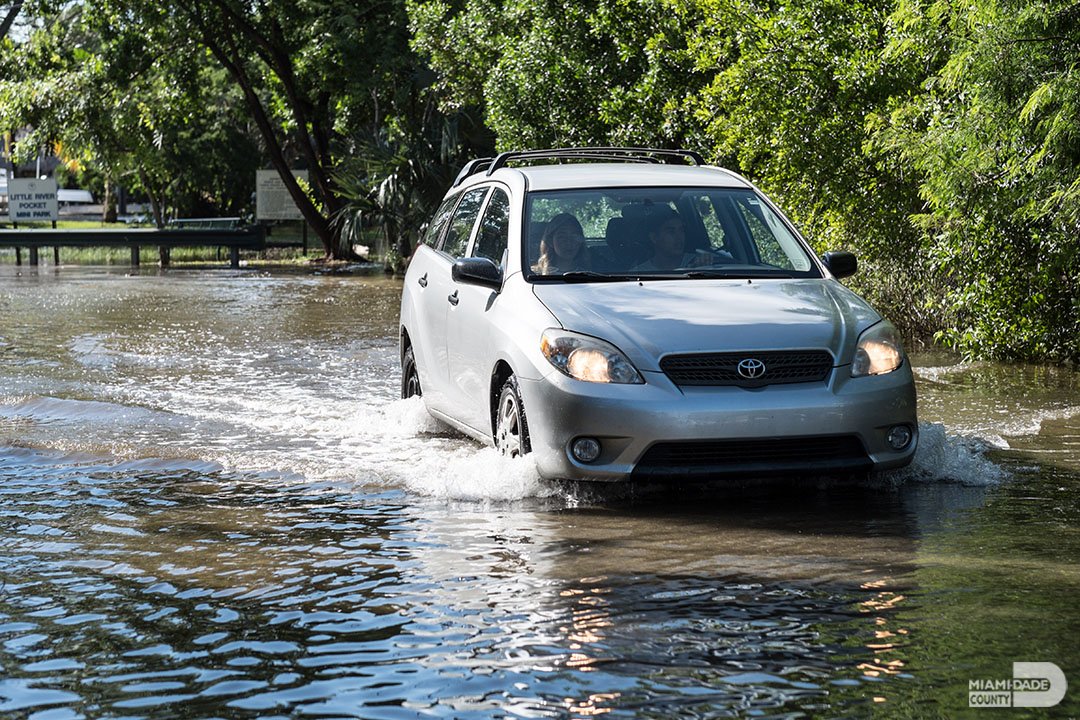 Here is what a king tide can look like in California or Oregon when it happens. A high King tide is extraordinary too. Actually this looks more like a high King tide than a low king tide.
Here is what a king tide can look like in California or Oregon when it happens. A high King tide is extraordinary too. Actually this looks more like a high King tide than a low king tide.Why King Tides Are Flooding Coastal Cities More Often

People walk through a flooded street in Fort Lauderdale caused by a king tide. Many cities in South Florida have begun installing pumps and building sea walls to try and combat the rising oceans. PHOTO BY JOE RAEDLE/GETTY IMAGES
People living along the coast are no strangers to significant weather — they often deal with hurricanes, rising sea levels and tropical storms. But there's another natural phenomenon that is slowly taking its toll on many seaside towns — the king tide.
In fact, Labor Day Weekend 2019 in the Florida, the usual masses tourists were nowhere to be seen. Instead the beaches along the East coast were empty and locals across the state were bracing for Hurricane Dorian. But what made the already unprecedented Category 5 Atlantic Ocean hurricane worse was it was making landfall during Florida's king tides.
What Are King Tides?
King tides are the highest astronomical tides of the year, the result of a perfect alignment between the Earth, sun and moon. Think of them as high tides on steroids. Every two weeks, the moon and the sun position themselves on the same side of the planet. Their combined gravitational pull tugs at Earth's oceans, resulting in tides that are about 20 percent higher than normal. Three or four times a year the moon, which has an elliptical orbit, snuggles up to Earth on its closest approach to the planet. When both of these astronomical events converge, a king tide rolls in.
"King tides can occur any time of the year, but tend to occur during the fall or spring near the full moon tides surrounding the equinox, when the moon is at perigee [closest to Earth in its orbit]," Derek Loftis, a research scientist at the College of William and Mary's Virginia Institute of Marine Science, says in an email. "The fall season's highest tides are slightly more pronounced due to the Earth being slightly closer to perihelion with the sun [on the solstice]."
King tides can worsen if they happen during a coastal storm, like what happened during Hurricane Dorian. The tide, along with a storm surge, pushed extra water inland. Meteorologists and other scientists are always concerned when storms line up with king tides. While scientists can calculate a king tide in advance, predicting storms before they blow through is much trickier.
Are King Tides Increasing?
For example, in October 2017 in Virginia and in other locations, Hurricane Jose, which never made landfall but churned hundreds of miles off the U.S. coast, contributed to king-tide flooding. Off Sewells Point near Norfolk, the water rose 0.73 feet (.22 meters) above what the National Oceanic and Atmospheric Administration considers minor flood stage there.
Such situations are becoming increasingly common and more troublesome. In Florida, the number of king tides has soared 400 percent between 2006 and 2016. And during summer of 2019, Miami set multiple high-tide records in late July and early August.
Why the increase? Although there are many reasons why king tides are driving water further inland, none is more worrisome than climate change. As Earth warms, ice melts and the temperature of the ocean gets hotter. When that happens, water expands and rises.
"The king tides are garnering more attention now due to the derivative effects of sea level rise, and coastal land subsidence due to the draining of subsurface aquifers for drinking water in many coastal regions," Loftis says.
Brian McNoldy, a scientist at the University of Miami's Rosenstiel School of Marine and Atmospheric Science, says seasonal effects, such as the amount of precipitation, also play a role. In addition, when trees and plants begin to shut down for the winter and shed their leaves, they cannot absorb as much rain runoff as they do in the spring and summer. As a result, the increase runoff contributes to flooding during king tides.
Although wind doesn't have a direct impact on king tides, it does play a role. In South Florida, McNoldy says, a persistent onshore wind increases the water level up to a foot (.03 meters) on top of the regular astronomic tides. The impact on communities can be devastating. Right after Hurricane Irma blew through in 2017, king tides flooded some neighborhoods of Anna Maria Island, Bradenton Beach and parts of South Florida for several days, creating unease in an already ravaged area.
Is This the "New Normal?"
Both McNoldy and Loftis say the king tide is the "new normal," which is one reason why some communities have been pouring money into shoring up infrastructure, housing and habitat restoration projects to minimize damage. Early in 2017, Miami Beach announced a new $100 million flood prevention project to keep neighborhoods from flooding. The city plans to raise roads, install pumps and water pipes, and make sure sewer connections hold up.
"King tides have always been around," Loftis says. "We have only just started calling them this in the past couple of years in the U.S. In Australia, where the name hails from, the king tide truly reigns supreme over the other tides, as they bring much higher water levels than the mean highest astronomical tides. Here in North America, the king tide is barely the king, and in many cases, is only a few inches higher than the high tides on the days before or after."
This story is part of Covering Climate Now, a global collaboration of more than 250 news outlets to strengthen coverage of the climate story.


No comments:
Post a Comment